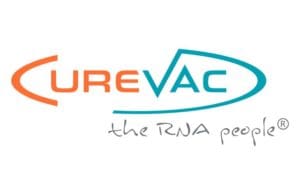 Some two week after announcing that its COVID-19 vaccine had an interim efficacy of 47% in a Phase 2b/3 trial, CureVac (NSDQ:CVAC) appears to be regaining its footing.
Some two week after announcing that its COVID-19 vaccine had an interim efficacy of 47% in a Phase 2b/3 trial, CureVac (NSDQ:CVAC) appears to be regaining its footing.
While its stock is trading well below its Feb. 5 peak of $120.43, CVAC shares have risen 30% in the past five days to $75.95 in mid-day trading today.
The company is installing a new chief operating officer, Dr. Malte Greune, who will begin work on July 1, 2021.
Greune will work to bolster CureVac’s board and clinical and manufacturing capabilities.
Greune joins CureVac from Sanofi where he worked in an executive business development role. Gruene has held various leadership positions at pharma companies in the past decade.
Earlier this month, CureVac cofounder Ingmar Hoerr withdrew his candidacy for nomination to the company’s board. Hoerr also served as the company’s CEO from March to August 2020
CureVac has also charged another co-founder, Florian von der Mülbe, with leading the development of its RNA printer. Last year, CureVac and Tesla Grohmann Automation (Prüm, Germany) collaborated on the experimental automated system for RNA printing. Tesla acquired the latter automation firm in 2017
Von der Mülbe plans on resigning from the company’s board to focus on the printing technology.
The fate of the company’s first COVID-19 vaccine candidate, CVnCoV, remains unclear. While CureVac executives blamed viral variants for the low interim efficacy figure, the leader of the study, Dr. Peter Kremsner, a professor of the University of Tübingen, Germany, believes the vaccine dose is to blame.
Including 12 micrograms of mRNA per dose, the CVnCoV vaccine has substantially less mRNA than the vaccines from Pfizer-BioNTech (30 micrograms) and Moderna (100 micrograms). “It is very likely that the amount of mRNA was ultimately not sufficiently immunogenic,” Kremsner told the German-language publication DAZ Online. While Kremsner said he hoped that CureVac’s use of a natural mRNA sequence would optimize vaccine efficacy, the results from the trial are “very clear,” he said.